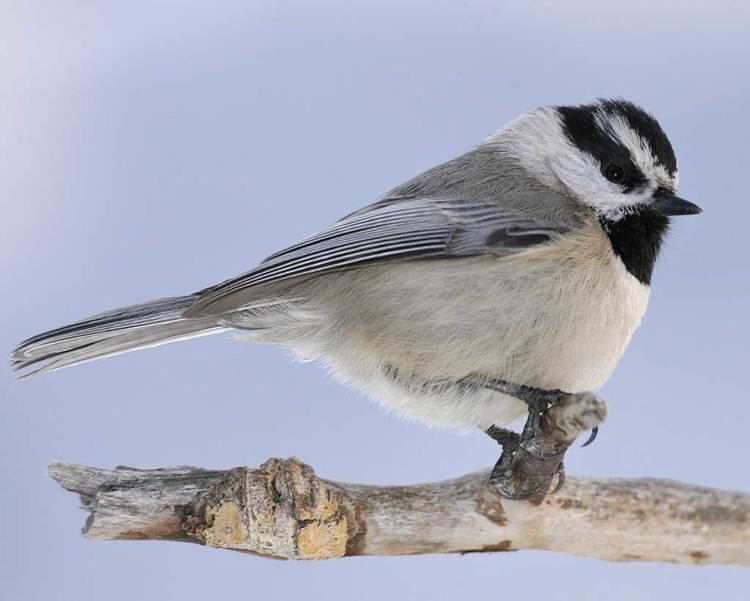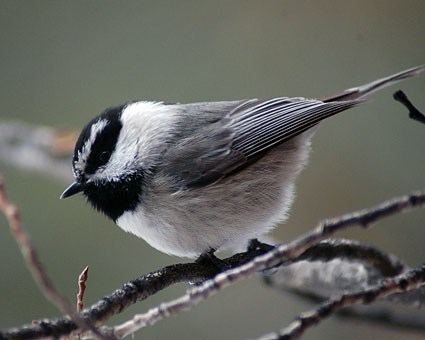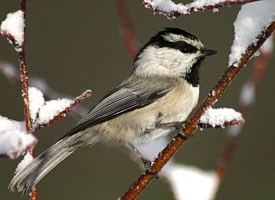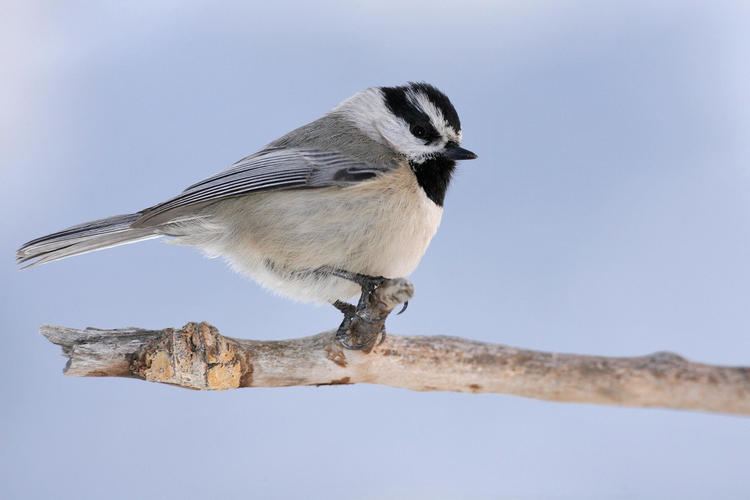Order Passeriformes Higher classification Poecile | Phylum Chordata Family Paridae Scientific name Poecile gambeli Rank Species | |
 | ||
Similar Bird, Poecile, Black‑capped chickadee, Pygmy nuthatch, Chestnut‑backed chickadee | ||
Dslr video mountain chickadee
The mountain chickadee (Poecile gambeli) is a small songbird, a passerine bird in the tit family Paridae. Often, it is still placed in the genus Parus with most other tits, but mtDNA cytochrome b sequence data and morphology suggest that separating Poecile more adequately expresses these birds' relationships. The American Ornithologists' Union has been treating Poecile as a distinct genus for some time.
Contents

The mountain chickadees are known colloquially as the cheeseburger birds, as their call sounds like they are saying "cheeseburger" They are also well known for their renowned forgetfulness.

Adults of both sexes have a black cap joining a black postocular stripe behind distinctive white eyebrows. Their backs and flanks are gray and they have paler gray underparts; they have a short black bill, and a black bib. The typical adult wingspan is 7.5 in (19 cm), and the overall length is 5–6 in (13–15 cm).

Common inhabitants of the mountainous regions of the western United States, their range extends from the southern Yukon to California and Rocky Mountain States in the United States. A few mountain chickadees may migrate locally up the mountains in the summer and down into the mountain foothills in the winter; but this phenomenon is not well documented. In the Santa Fe Valley of the southern Rocky Mountains, in New Mexico, they can be found about 300 ft (91 m) above town, at 7,300 ft (2,200 m), as well at the base of the tallest mountains, Tesuque and Baldy at 10,400 ft (3,200 m); that mountain base is located 25 minutes up the one mountain road from the valley.

They breed monogamously, producing 1 to 2 broods per year. Incubation by the female is 14 days. The young are altricial, and stay in the nest for 21 days while being fed by both parents.
Their primary diet is insects during the summer and breeding season; conifer seeds and other plant seeds are taken throughout the year. They cling to the undersides of branches and to tree trunks, searching for food in the bark or breaking seeds open by hammering them with their beaks.
Their call is a throaty chick-adee-dee-dee, while their song is a 3- or 4-note descending whistle fee-bee-bay or fee-bee-fee-bee. They travel in pairs or small groups, and may join multi-species feeding flocks after breeding season.
Recent studies have indicated that in mixed flocks, black-capped chickadees become dominant over mountain chickadees.
The specific name honors naturalist William Gambel.
